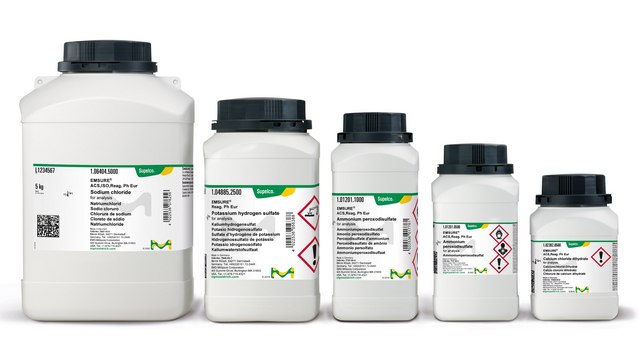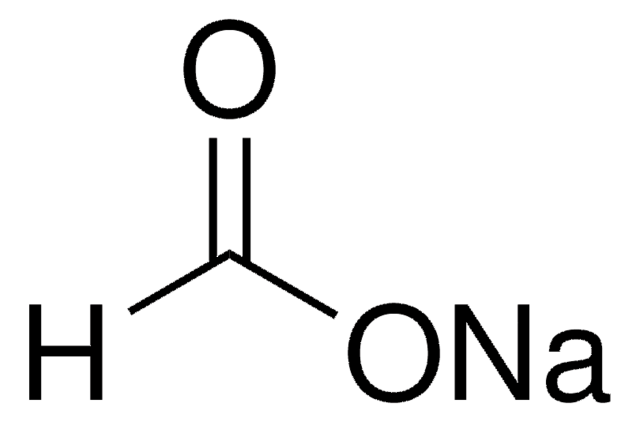237108
Barium carbonate
ACS reagent, ≥99%
Synonym(s):
Witherite
About This Item
99.0-101.0% (ACS specification)
Recommended Products
grade
ACS reagent
Quality Level
Assay
≥99%
99.0-101.0% (ACS specification)
form
powder or chunks
impurities
≤0.002 meq/g water-soluble titr. base
≤0.005% oxidizers
≤0.015% insol. dil. HCl
pH
6.8 (37 °C, 3.67 g/L)
anion traces
S2-: ≤0.001%
chloride (Cl-): ≤0.002%
cation traces
Ca: ≤0.05%
Fe: ≤0.002%
K: ≤0.005%
Na: ≤0.02%
Sr: ≤0.7%
heavy metals (as Pb): ≤0.001%
SMILES string
[Ba++].[O-]C([O-])=O
InChI
1S/CH2O3.Ba/c2-1(3)4;/h(H2,2,3,4);/q;+2/p-2
InChI key
AYJRCSIUFZENHW-UHFFFAOYSA-L
Looking for similar products? Visit Product Comparison Guide
General description
Application
- In the preparation of barium titanate using a mixture of BaCO3 and titania (TiO2) by solid-state reaction.
- As an additive in the preparation of NBC (neodymium – barium –copper) ceramics.
Signal Word
Warning
Hazard Statements
Precautionary Statements
Hazard Classifications
Acute Tox. 4 Oral
Storage Class Code
13 - Non Combustible Solids
WGK
WGK 1
Flash Point(F)
Not applicable
Flash Point(C)
Not applicable
Choose from one of the most recent versions:
Already Own This Product?
Find documentation for the products that you have recently purchased in the Document Library.
Our team of scientists has experience in all areas of research including Life Science, Material Science, Chemical Synthesis, Chromatography, Analytical and many others.
Contact Technical Service




